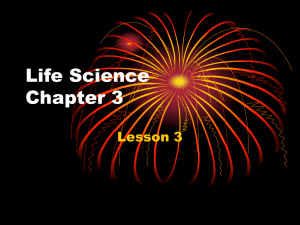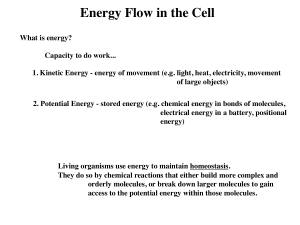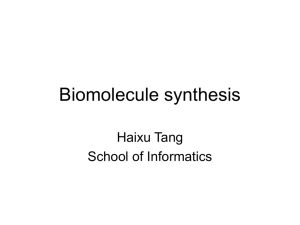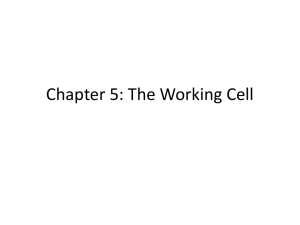metabolism
advertisement
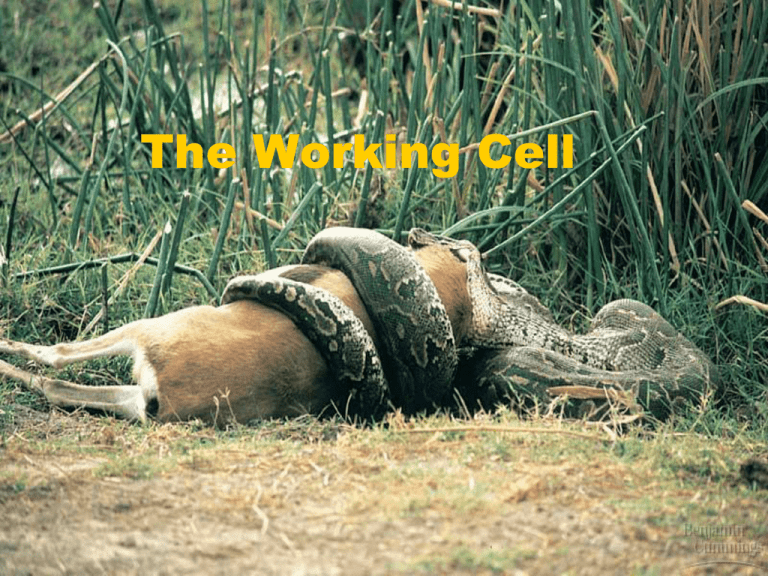
The Working Cell How Cells Get Energy Life Depends on Energy What is energy? 1st Law of Thermodynamics Two types of energy? 2nd Law of Thermodynamics 2nd Law in Action Food Energy Calorie Energy needed to raise 1 g by 1 ºC Food is in kcal Metabolism How can we get energy from foods we eat? Where is the potential energy in foods? How does the potential energy in foods get converted to kinetic energy useable by cells? ATP: Adenosine triphosphate The tail of ATP is vary unstable This means greater potential energy When a phosphate is transferred to another molecule, energy is released Energy Coupling Chemical energy is ‘harvested’ from food molecules Where’s the energy in food? This energy is used to recycle ADP to ATP Enzymes Your metabolism and ETC are controlled and catalyzed by enzymes What are enzymes? How do they work? Activation Energy For a reaction to occur, an energy barrier must be surmounted Enzymes make the energy barrier smaller Induced-Fit Model Enzymes are substrate specific Substrates bind to active sites Substrates are altered slightly by induced fit Induced fit favors the reaction How Enzymes Work Enzyme Inhibition Some molecules affect enzyme function Competitive Non-competitive Feedback Inhibition Diffusion Molecules never stay still Diffusion moves molecules ‘down concentration gradient’ Osmosis Diffusion of water molecules Osmoregulation Osmoregulation Passive & Facilitated Transport Active Transport Signal Transduction Pathway Active Transport What about molecules that are too big to pass through a transport protein? Endocytosis
